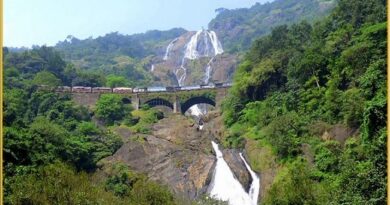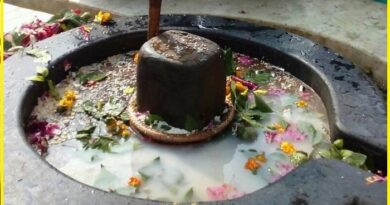North Macedonia-The Land of Alexander the Great and an Incredible Landscape
North Macedonia
Macedonia is a small kingdom in northern Greece, established as an empire from 359 B.C. to 323 B.C. through the reign of several kings. Alexander the Great, in ancient Macedonia, conquered many lands in the Hellenistic age in the region. Macedonia is an elevated plateau of large, rolling hills and deep valleys, completely dissected and surrounded by mountains like the Sar Mountains, Osogovski Mountains, and others. North Macedonia is a new country, bordered by Albania, Kosovo, Serbia, Bulgaria, and Greece. The Place is known for protected lakes, hiking trails, national parks, and ancient, old-world culture. North Macedonia is incredibly dense with landscapes and adventure possibilities. With some great activities like Horseback riding, e-bikes, hikes, cycling, paragliding, and mountaineering, North Macedonia is one of Europe’s most attractive destinations.

History
North Macedonia gained independence in 1991 and Previously it was known as the Former Yugoslav Republic of Macedonia. It is a landlocked country bordering Kosovo to the northwest, Serbia to the north, Bulgaria to the east, Greece to the south, and Albania to the west. Skopje is the capital and largest city. Ancient Macedonia was a small kingdom located in northern Greece. The Mackednoi tribe first inhabited the area and gave the country its name. According to historian Herodotus, they were the first people to call themselves “Hellenes.” The term Hellenistic later became synonymous with all things Greek.
The history of the Macedonians began in 808 B.C.E. with Caranus, who was the first known king of Macedonia. In 359 B.C.E., King Phillip II became the ruler and united the southern Greek city-states with the north and brought them all under Macedonian rule. King Phillip II improved his army and conquer other lands in the Mediterranean region. In 336 B.C.E. his son Alexander, later known as Alexander the Great became king.

He was able to expand the empire to Asia and India. Alexander was a great warrior who did not lose a single battle. After his death in 323 B.C.E., the empire was divided by 4 of his top generals. Over the next century, these territories experienced conflict with each other for control of these lands. Ultimately Rome took over the Macedonian lands. By 146 B.C.E., Macedonia became a Roman province. By 65 B.C.E., Rome conquered the Asian portion of what was the Macedonian kingdom. In Egypt, Macedonian rulers existed till, 30 B.C.E., when Cleopatra VII was defeated by Rome.
Also, read- A Byzantine times Castle and UNESCO site near Sparta-Mystras Greece
Geography
North Macedonia has a total area of 25,713 km2 North Macedonia is a landlocked country that is geographically bounded by a central valley formed by the Vardar river and framed along its borders by mountain ranges. The terrain is mostly rugged, located between the Šar Mountains and Osogovo, which frame the valley of the Vardar river. Three large lakes—Lake Ohrid, Lake Prespa, and Dojran Lak-lie on the southern borders. Ohrid is considered to be one of the oldest lakes and biotopes in the world. The region is seismically active and has been the site of destructive earthquakes in the past. North Macedonia map- The Map is showing the location of North Macedonia from Greece and neighboring countries. North Macedonia Map also shows the major countries around it.

North Macedonia consists of scenic mountains. The first is the Šar Mountains a group of mountains such as Baba Mountain, Nidže, Kožuf, and Jakupica also known as the Dinaric range. The second range is the Osogovo-Belasica mountain chain, also known as the Rhodope range. The Šar Mountains are younger and higher than the older mountains of the Osogovo-Belasica mountain. Mount Korab of the Šar Mountains on the Albanian border, at 2,764 m, is the tallest mountain in North Macedonia.
Must see Attraction in North Macedonia
Golem Grad
Golem Grad also known as Snake Island, in North Macedonia. It is located in Lake Prespa, a few kilometers from the Greek and Albanian border, and covers an area of 20 hectares. Golem Grad is home to several ancient ruins and churches. It is also home to several different animals, especially snakes.

Veles North Macedonia
Veles is a predominantly industrial town where the production of porcelain, silk, and lead flourishes. the city known for steep and winding lanes flanked by traditional wooden houses. It is perfect for enjoyable afternoon outings, Its historical and natural attractions make it well worth a visit. The city of Veles is surrounded by mountains to the west, ideal for hiking or camping.
Sveti Naum monastery
The Monastery of Saint Naum is an Eastern Orthodox monastery in North Macedonia. The place is named after the medieval Bulgarian writer and enlightener Saint Naum who founded it. It is situated along Lake Ohrid, 29 kilometers south of the city of Ohrid. Lake Ohrid including St Naum is one of the most popular tourist destinations in North Macedonia.

Mavrovo National Park
The Mavrovo national park is the largest national park in the country. In Mavrovo travelers can explore its splendid scenery by horseback, kayak, or skis, as well as on foot or via mountain bike. It is also home to the country’s largest artificial lake. Take a boat trip on its tranquil waters and see the half-submerged St. Nicholas Church, a truly breathtaking sight. Mavrovo is home to the country’s highest peaks, there is plenty of great rock climbing and skiing to be had in winter.

Bitola North Macedonia
Bitola is located in the southern part of the Pelagonia valley, surrounded by the Baba, Nidže, and Kajmakčalan mountain ranges. The Heraclea Lyncestis archaeological site, with its stunning floor mosaics and Roman theatre. An Old Covered Bazaar stretches out along the Dragor river, Byzantine churches, and heritage buildings are the Bitola gems, that are worth seeing.
Things to do in North Macedonia
Capital of North Macedonia-Skopje
Skopje, the capital of North Macedonia, straddles the Vardar River. On either side, the city has an ancient history and great modernity. A walking tour of the downtown area leads to the Ottoman-era bazaar, with its shops, restaurants, and cafes it is one of the places to have a great day. Travellers can visit Kale Fortress, a 6th-century Byzantine Empire that provides a strategic view across the city. Apart from the fortress and the bazaar, the Museum of Contemporary Art houses some of the 20th century’s most important artists, such as Picasso. Finish the day with dinner in traditional restaurants and cosmopolitan lounges in the city avenues.
Majestic Ohrid
Lake Ohrid is the most scenic place in the country and a postcard symbol. The historic landscape is filled with ancient monasteries, churches, chic beach bars, and fish restaurants that surround the tectonic lake (3 million years old) and 300-meter-deep inland bodies of water on the continent. The Ohrid lake region is declared as a Unesco site for its cultural significance, the fragile confluence of traditions, architecture, and natural wonder.
Trekking and biking
North Macedonian natural landscape is a superlative place for trekking and mountain biking and is as good as anywhere in Europe. North Macedonia’s multiple ranges, dominated by the country’s iconic Šar Mountains, are known for giant peaks and welcoming, villages. They are also a crisscrossed hiking trail, single-day walks, and adrenaline-charged trail rides. The Šar Range’s highest peak at 2747 meters combines mountains and lakes and is the best place for a multi-day bike ride. Hiking and cycling here are the best things to do with the diversity of routes, the beauty of the mountains, and easy accessibility.

How to Reach North Macedonia
There are two international airports in the Republic of Macedonia, one is Alexander The Great Airport in Skopje, and the other is St.Paul the Apostle Airport in Ohrid. Skopje is the best-connected airport among different European cities. The place is reachable by Skopje-Ohrid bus service.



